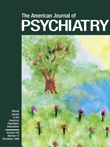Readers of the British Journal of Psychiatry and Comprehensive Psychiatry will be familiar with the historical essays of German Berrios, who since the early 1980s has been exploring the roots of descriptive psychopathology in nineteenth-century medicine and philosophy. The History of Mental Symptoms is Berrios’ magnum opus. It is a remarkable scholarly achievement, a work of enormous ambition, and, I suspect, one of the most important books in our field. I say “suspect” because this book is difficult for the nonexpert. It is thought-provoking, but it is also repetitive and dotted with dull stretches reminiscent of Biblical “begats.”
The central issues for Berrios are what constitutes a symptom and what definitions of symptoms say about the metaphysics of the schools of psychiatry of which they form a part. Symptoms lie on the boundary of internal and external. A symptom is a linguistic utterance that psychiatrists categorize and tend to link to posited inner sensations and to syndromes, diseases, and etiologies. This sequence would seem to admit of a variety of combinations of hypotheses, but, in practice, descriptive psychiatry has, in Berrios’ words, remained in a “steady state” for a long while, opinion oscillating among a small set of ideas. Berrios believes that this steady state requires explanation, not only in terms of the stability of the biological signal the symptom represents but also in terms of the “social constructions” that arose at the end of the 1700s.
Berrios opens with a strong chapter on descriptive psychiatry, a form of discourse that begins in the nineteenth century and can be distinguished from the less rule-bound discourses that preceded it. He proceeds to detail the history of a series of symptoms, devoting separate chapters to anhedonia, mental retardation, anxiety, disorders of perception, and 14 other categories. Each symptom is examined chronologically, in a survey that includes literature from French, German, Italian, Spanish, and British sources.
The effect of this exhaustive inquiry is to make the great figures look less original. Pinel, Esquirol, Janet, Jackson, and Kraepelin dissolve into a sea of lesser known theorists. In some regards, the hero of Berrios’ account is John Locke, but even he is hard to distinguish in the crowd of philosophers.
Berrios’ work elicits an appreciation of the oddness of the material clinicians work with. What constitutes a delusion? Is it merely an aberrant belief? Must it be part of an aberrant system of reasoning? Berrios writes, “However bizarre the content of speech acts might be, clinicians would not be happy to call them ‘delusions,’ if at the same time they were upheld with a certain coyness, and were accompanied by a correct probabilistic assessment of their reality.” Berrios questions whether, finally, delusions represent pathological beliefs. The received view is that the delusional declarative speech act reliably contains information about an inner mental state. Berrios traces this belief to nineteenth-century roots, which is to say to outmoded philosophy. Perhaps delusions are “empty speech acts whose informational content refers to neither world nor self.” There may be so little information in delusions that the productive area of study is the predelusional state.
The chapter on delusion is an example of Berrios at his best. Throughout, this book is a resource for the historian of science; when Berrios enriches the chronology with his own synthesis, these essays also hold extraordinary rewards for the clinician.

